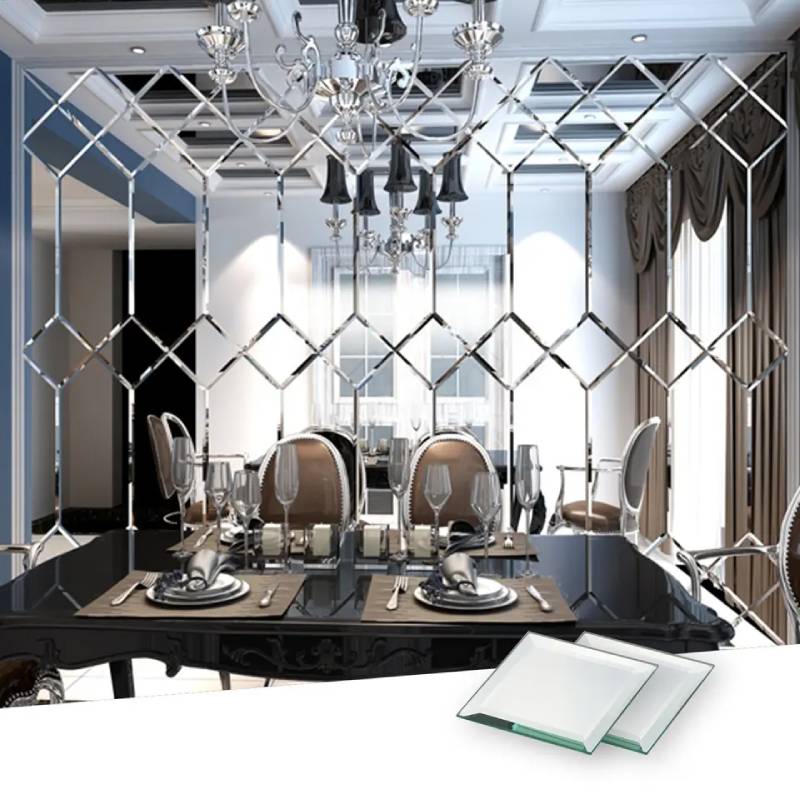The Allure of Green Tint Glass A Perfect Fusion of Aesthetics and Functionality
In the realm of interior design and architecture, few materials have captured the imagination quite like glass. Its ability to capture light, create space, and offer transparency has made it a cornerstone of modern aesthetics. Recently, a particular innovation within this medium has garnered significant attention green tint glass. This unique variation possesses distinct qualities that make it appealing both visually and functionally.
Green tint glass is a type of colored glass that features a subtle green hue, achieved during the manufacturing process. This tint not only enhances the aesthetic appeal of glass installations but also offers various practical benefits, setting it apart from standard clear glass. The allure of green tint glass lies in its collaboration of beauty and utility.
Aesthetic Appeal
The visual impact of green tint glass is extraordinary. The delicate green shade infuses spaces with an inviting atmosphere while maintaining a sense of serenity. It can serve as a stunning feature in both residential and commercial settings. Windows, facades, and partitions made of green tint glass can create dynamic reflections and light play, transforming a mundane environment into an artistic experience. From the calming greens of nature to the luxurious ambiance of a high-end restaurant, this glass can subtly alter perceptions and enhance mood.
Moreover, the color green is often associated with harmony, growth, and vitality. Incorporating green-tinted glass into interior designs can evoke a connection to nature and the outdoors, making it particularly popular in settings aiming to provide a tranquil ambiance. Whether used in a corporate office that seeks to inspire creativity or in a cozy home that desires warmth, green tint glass serves to create inviting spaces.
Functional Advantages
green tint glass
Beyond its aesthetic advantages, green tint glass boasts several functional properties that make it a popular choice for architects and designers. One of the primary benefits is its ability to filter light. The green tint offers a degree of light modulation, which can help reduce glare in brightly lit spaces. This characteristic is especially valuable in environments like conference rooms, lobbies, and homes where managing natural light is crucial for comfort.
In addition to glare reduction, green tint glass can aid in energy efficiency. By controlling the amount of light and heat that enters a building, it can play a significant role in reducing cooling and heating costs. During the hot summer months, this glass helps to lower indoor temperatures by limiting excessive sunlight. Conversely, in the winter, it can assist in retaining warmth within a space. This energy-efficient property aligns with contemporary goals of sustainability and eco-friendliness in architecture.
Versatile Applications
The versatility of green tint glass makes it suitable for a myriad of applications. In residential design, it can be used for windows, doors, shower enclosures, and decorative glass features. Its ability to create privacy without sacrificing natural light makes it an excellent choice for bathrooms and bedrooms.
In commercial settings, green tint glass has found its place in the design of storefronts, offices, and public buildings. Its alluring appearance attracts customers while providing energy efficiency that can lead to long-term savings for business owners. Moreover, it can be employed in outdoor installations, such as balustrades and patios, creating a seamless transition between indoor and outdoor spaces.
Conclusion
In summary, the charm of green tint glass transcends its visual appeal. Its ability to combine beauty with functionality makes it a favored choice in modern architecture and design. As societies continue to prioritize sustainability and wellness in their environments, materials like green tint glass will likely see increased adoption. Embracing this unique form of glass not only enhances aesthetic value but also aligns with contemporary values of energy efficiency and harmony with nature. The future of architecture may very well be tinted green, reflecting a world that seeks balance between innovation and nature.
 Afrikaans
Afrikaans  Albanian
Albanian  Amharic
Amharic  Arabic
Arabic  Armenian
Armenian  Azerbaijani
Azerbaijani  Basque
Basque  Belarusian
Belarusian  Bengali
Bengali  Bosnian
Bosnian  Bulgarian
Bulgarian  Catalan
Catalan  Cebuano
Cebuano  Corsican
Corsican  Croatian
Croatian  Czech
Czech  Danish
Danish  Dutch
Dutch  English
English  Esperanto
Esperanto  Estonian
Estonian  Finnish
Finnish  French
French  Frisian
Frisian  Galician
Galician  Georgian
Georgian  German
German  Greek
Greek  Gujarati
Gujarati  Haitian Creole
Haitian Creole  hausa
hausa  hawaiian
hawaiian  Hebrew
Hebrew  Hindi
Hindi  Miao
Miao  Hungarian
Hungarian  Icelandic
Icelandic  igbo
igbo  Indonesian
Indonesian  irish
irish  Italian
Italian  Japanese
Japanese  Javanese
Javanese  Kannada
Kannada  kazakh
kazakh  Khmer
Khmer  Rwandese
Rwandese  Korean
Korean  Kurdish
Kurdish  Kyrgyz
Kyrgyz  Lao
Lao  Latin
Latin  Latvian
Latvian  Lithuanian
Lithuanian  Luxembourgish
Luxembourgish  Macedonian
Macedonian  Malgashi
Malgashi  Malay
Malay  Malayalam
Malayalam  Maltese
Maltese  Maori
Maori  Marathi
Marathi  Mongolian
Mongolian  Myanmar
Myanmar  Nepali
Nepali  Norwegian
Norwegian  Norwegian
Norwegian  Occitan
Occitan  Pashto
Pashto  Persian
Persian  Polish
Polish  Portuguese
Portuguese  Punjabi
Punjabi  Romanian
Romanian  Russian
Russian  Samoan
Samoan  Scottish Gaelic
Scottish Gaelic  Serbian
Serbian  Sesotho
Sesotho  Shona
Shona  Sindhi
Sindhi  Sinhala
Sinhala  Slovak
Slovak  Slovenian
Slovenian  Somali
Somali  Spanish
Spanish  Sundanese
Sundanese  Swahili
Swahili  Swedish
Swedish  Tagalog
Tagalog  Tajik
Tajik  Tamil
Tamil  Tatar
Tatar  Telugu
Telugu  Thai
Thai  Turkish
Turkish  Turkmen
Turkmen  Ukrainian
Ukrainian  Urdu
Urdu  Uighur
Uighur  Uzbek
Uzbek  Vietnamese
Vietnamese  Welsh
Welsh  Bantu
Bantu  Yiddish
Yiddish  Yoruba
Yoruba  Zulu
Zulu 

